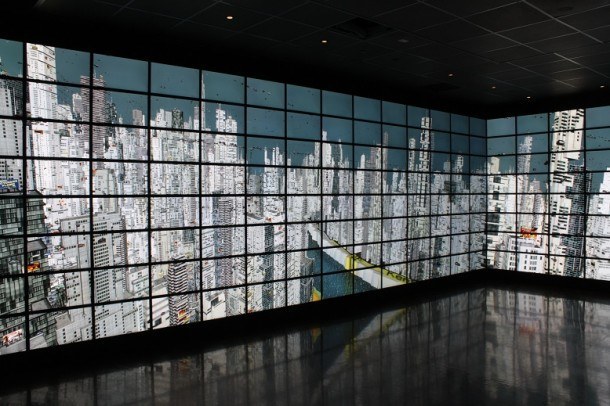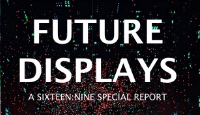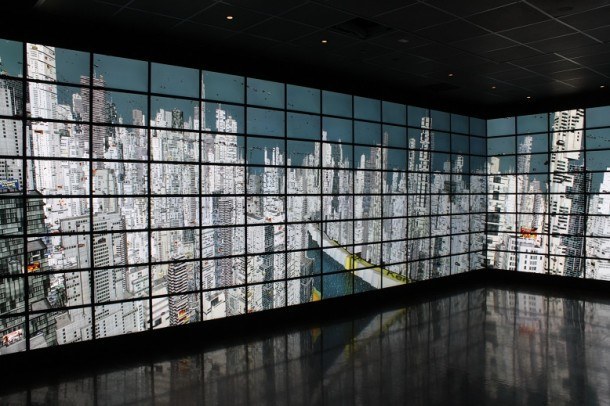
Project Profile: Massive Video Room Shows Narrow Bezels Essential
November 21, 2012 by Dave Haynes
Here is the ultimate reference case on why video walls need to use super narrow bezel monitors or display cube tech like MicroTiles or Prysm.
Here is a massive, absolutely massive video wall that looks like hell because they spec’d in monitors with wider bezels.
Stony Brook University, on the north shore of Long Island and in the outer orbit of New York City, has turned on a video wall it says is the closest thing in the world to the “holodeck” in Star Trek, which I guess means something if you are among the faithful millions.
Using a $1.4 million National Science Foundation grant, the new “Reality Deck” is a 416 unit LCD four-sided wall in the university’s Center of Excellence in Wireless and Information Technology. The wall is driven by an 85-node graphics computing cluster that is touted as rivaling the performance of modern supercomputers.
It will fully immerse visitors in 1.25 billion pixels of information, approaching the visual acuity of the human eye, says project director, Arie E. Kaufman, Ph.D., Distinguished Professor and Chair of the Computer Science Department and Chief Scientist at CEWIT.
The $1.4 million grant was supplemented by $600,000 from Stony Brook for a total of $2 million.
Dr. Kaufman, in a university press release, calls the Reality Deck a “unique tiled display environment…with more than a billion pixels that can provide a life-like, realistic immersion into the data to be explored and reasoned with. This revolutionary facility is a one-of-a-kind exploration theater. It is an engineering feat – a unique assembly of hundreds of LCD displays, graphics cluster, sensors, communication, computer vision and human-computer interaction technologies to deliver a holistic system with a significant societal and research and development value.”
The billion available pixels can provide life-like, realistic immersions into the data, such as scans from the University Medical Center’s new 320-slice computed tomography (CT) scanner for virtual colonoscopies and rapid diagnosis of acute chest pain patients.
Other proposed projects include satellite imaging, nano electronics, climate modeling, micro tomography, survey telescopes for astronomical applications, detecting suspicious persons in a crowd, news and blog analyses.
So, the visuals will indeed be pretty remarkable and detailed. But the whole thing is peppered with grid lines. If we take the $1.4 million and divide that by 416, that’s about $3,500 a 27-inch display (remember there was another $600K to allocate for the room and computers and stuff).
The MicroTiles and Prysm products are expensive, as are super narrow bezel LCDs, but you have to think a slightly smaller room with damn near seamless visuals would have been sooooo much better. At $3,500 a pop, you could have bought a lot of them.
The screens are just 27-inchers, with 2560 x 1440 resolution (versus 720 by 540 for smaller MicroTiles screens). But still.
Lost opportunity.




Leave a comment